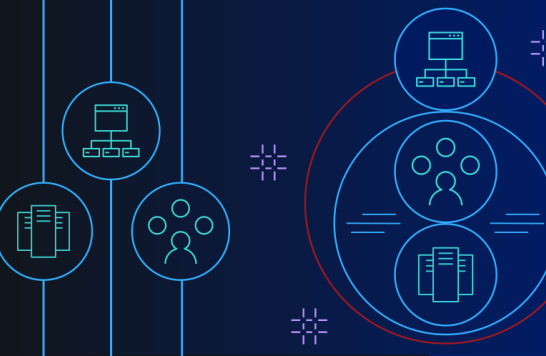Hybrid Cloud and Why It Matters

Hybrid cloud architectures have grown greatly in popularity over the past few years. For some businesses, they're a good way to balance the economy and scalability of public cloud services with the extra control and security which private clouds and on-premises servers offer. For others, they're a natural migration path from on-premises services to cloud services. Combining approaches allows an easier transition than an all-or-nothing jump.
Public cloud services are good for many things, but they aren't always the best choice. Policies, regulations, or contracts may require a more restrictive approach. The public cloud is economical and flexible; non-public resources offer greater control. Why not use each approach where it works best?
What is a hybrid cloud?
Look through discussions on the Web of hybrid clouds, and you'll quickly notice one thing: there's no agreed-upon definition. Here's a definition that covers most of the use cases: an integrated set of services, some of which reside on a public cloud and some of which are on other kinds of servers. "Other kinds" generally means an on-premises server or a private cloud.
What's an "integrated set"? When do you have a hybrid cloud, and when do you just have cloud services and things which aren't on the cloud? That's a tougher question. For the collection to count as a hybrid cloud, it should be held together by APIs or automation. If data moves between the cloud and a private server by manual processes, that's not a hybrid cloud.
For this discussion, we'll refer to the non-public portion as the "private server." This could be an on-premises server, a privately held server in a data center, or a private cloud.
Ways to use the hybrid cloud
There are many use cases for hybrid clouds. The approach depends on what "as a service" level you're using and on what you need to keep a closer hold on. Here are a few examples of how the work might be divided up.
-
Strictly in-house applications reside on the private server; applications shared with partners are on the public cloud.
-
Applications requiring the fastest response or involving sensitive data are kept on the private server, using the public cloud for less critical applications.
-
SaaS applications use the public cloud and access a privately stored database.
-
Standard applications are on the public cloud, while custom code runs are on the private server where it's easier to maintain.
Benefits of the hybrid cloud
Public cloud services offer two main advantages: scalability and economy. The best services offer very good security, but users share the use of servers. A private server, at its best, gives you an extra level of security and control. The words "at its best" are important; a top-quality cloud service is far safer and more reliable than a private service with uncertain management.
A hybrid cloud offers the best of both worlds. The private portions give better performance and higher security. Functionality that can go on the public cloud costs less and can more easily be scaled when needed. All the pieces work smoothly together.
Adopting and managing a hybrid cloud
If a company is starting from an entirely on-premises network, moving to a hybrid cloud is easier than jumping straight to an all-cloud solution. Services can migrate when it's useful, without any rush.
The important thing is to use services with APIs that allow straightforward integration of the components. Having private servers and cloud components that can't easily talk to each other makes data management harder than before. It may be necessary to do some custom development to integrate the public cloud with the private server. A number of automation tools are available to help with this.
There's no definite point at which you're done. It's always possible to shift more services from the on-premises server to the public or private cloud. The object is to find the combination of services that will deliver the most savings, security, and productivity. A hybrid cloud gives the flexibility to adapt to new needs.
Resources
-
Strong Automation Strategy Is Key During Pandemic Recovery
As workplaces figure out their new normal, automation has a role to play – but the ad hoc implementation that happened during the COVID-19 pandemic can't continue.
-
Keeping your IBM Power Systems highly available
IBM Lab Services helps you deploy the building blocks of a next-generation IT infrastructure that empowers your business.
-
Making storage simple for containers, edge and hybrid cloud
IBM Spectrum® Fusion is a container-native software defined storage (SDS) solution that fuses IBM’s trusted general parallel file system technology (IBM Spectrum® Scale) and its leading data protection software (IBM Spectrum® Protect Plus).
-
8 reasons why IBM Power Systems is your app modernization foundation
Application modernization comes in many shapes and sizes, and it’s not always easy to know where to start. Check out the strengths and benefits that IBM Power Systems brings to your modernization efforts.
Questions?
Are you ready to make the most of IT? Schedule a call with an expert today.
Call 877-591-4015 or REQUEST A FREE CONSULTATION



